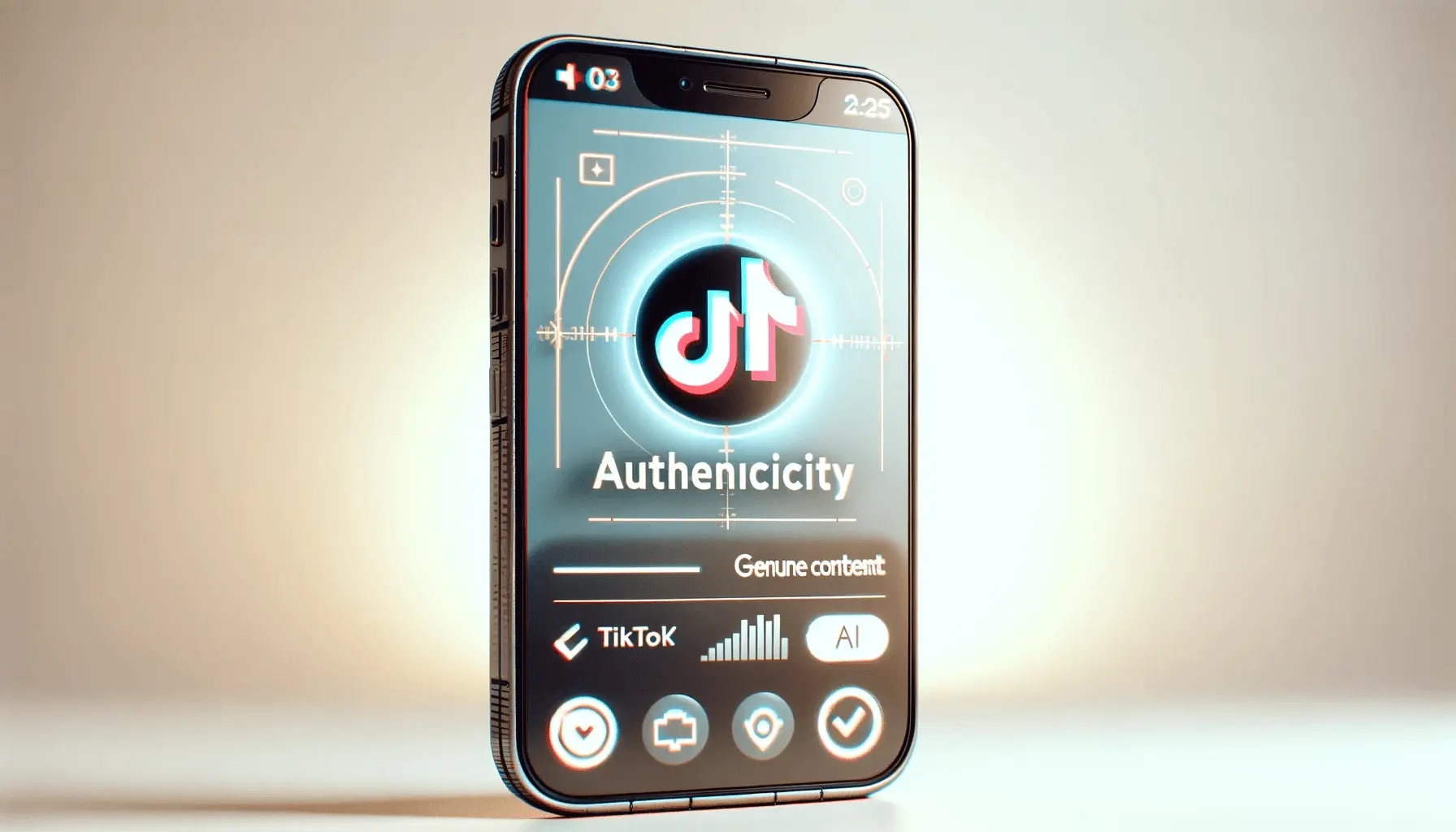In the modern digital era, TikTok has become a force to be reckoned with, changing the game when it comes to social media advertising.
Its sudden rise and distinctive user interaction have forced marketers to revisit old ways of doing business and adopt new, creative approaches.
Let’s explore how TikTok’s growth and user base are impacting social ads.
- The Rise of TikTok in Social Media Advertising
- Chief TikTok Trends Changing Social Ads
- Case Studies: Successful TikTok Ad Campaigns
- Brands’ Strategies to Leverage TikTok Trends
- Measuring the Impact of TikTok Trends on Social Media Advertising
- Harnessing TikTok Trends for Social Ad Success
- Frequently Asked Questions on TikTok Trends in Social Advertising
The Rise of TikTok in Social Media Advertising
The growth of TikTok from a niche product to an international phenomenon is nothing short of a miracle.
Understanding its growth trajectory and user demographics is essential for brands who want to access its advertising reach.
TikTok has experienced significant growth since its launch, attracting a diverse pool of users globally.
With over 1.6 billion active users globally as of 2024, marking a 6.1% increase from last year, this growth indicates the increasing presence of TikTok on social media.
In the United States, TikTok’s success is equally mind-boggling.
The platform reached 170 million monthly active users in January 2024, up from 150 million in February 2023.
That is approximately one-third of the US population using TikTok on a regular basis, marking its significance in the American online landscape.
TikTok’s Dominant User Demographics
Segmenting the age ranges, TikTok mostly caters to a youth audience.
Globally, the users between the ages of 18 and 24 comprise about 36.2% of users, while 25- to 34-year-olds constitute some 33.9%.
In the US, 56% of young adults between the ages of 18 and 34 also report using the site.
These figures solidify TikTok’s popularity among young adults and thus is a good destination for brands targeting that segment.
The gender distribution on the platform shows a slight male majority.
As of February 2025:
- 55.7% of TikTok’s global audience is male
- 44.3% is female
This split gives brands flexibility in tailoring their social media advertising approaches to different audience groups.
Engagement and Content Trends on TikTok
Aside from raw counts, TikTok’s unique content format and algorithm generate high user engagement.
The platform’s emphasis on short-form, creative video content drives active participation, setting it apart from other social media sites.
This environment offers brands an active platform to connect with users in authentic and innovative ways.
In brief, TikTok’s rapid expansion and distinctive user populations have revolutionized social media advertising.
Brands who see and act on these trends can leverage TikTok’s influence to create powerful, engaging campaigns that connect with a vibrant, diverse audience.
TikTok’s exponential growth has made it a critical platform for advertisers seeking to connect with younger audiences. Brands leveraging its massive user base can achieve significant reach and engagement.
Chief TikTok Trends Changing Social Ads
As TikTok grows, various upcoming trends are having a major impact on social media advertising strategies.
With an understanding of these trends, brands can devise more compelling and effective campaigns that resonate with their target audiences.
Integration of Artificial Intelligence in Content Creation
Artificial intelligence (AI) is proving to be one of the prime drivers for TikTok brands, boosting creativity and productivity in content generation.
TikTok’s latest AI features, such as SymphonyTikTok's AI-powered tool that assists in creating ad scripts, video translations, and AI-generated avatars., assist in generating ad scripts, video translations, and AI-generated avatars.
This allows brands to quickly create diverse and personalized content, engaging more authentically with their audiences.
Niche Influencer Collaborations
Collaborating with niche influencers has become an increasingly popular strategy for brands looking to build trust and authenticity.
By partnering with influencers who have dedicated followings in specific communities, brands can create genuine connections with consumers.
Unlike traditional celebrity endorsements, niche influencer collaborations on TikTok offer a more relatable and effective way to engage targeted audiences.
Emphasis on User-Generated Content
User-generated content (UGCUser-Generated Content, referring to content created by users rather than brands, often used in marketing campaigns.) continues to be the backbone of successful TikTok ad campaigns.
Encouraging users to create content around a brand or product not only expands reach but also builds trust.
Brands that leverage UGC often experience higher engagement rates and foster stronger community connections.
- UGC helps brands showcase authentic product experiences.
- It encourages creativity and brand advocacy among users.
- Engagement and interaction increase organically.
Emergence of Social Commerce and Shoppable Content
The introduction of e-commerce functionalities by TikTok has transformed the platform into a vibrant marketplace.
Features like TikTok Shop and shoppable advertisements allow users to purchase items directly within the app, streamlining the customer journey from discovery to purchase.
By seamlessly merging content and commerce, brands are well-positioned to capitalize on impulse buying and drive sales with greater ease.
By staying aware of these TikTok trends, brands can leverage the platform’s unique features to create powerful social ad campaigns that resonate with modern-day audiences.
Embracing trends like AI-powered content creation, influencer collaborations, and shoppable content enables brands to maximize their visibility and engagement on TikTok.
Case Studies: Successful TikTok Ad Campaigns
Examining successful TikTok ad campaigns provides valuable lessons in effective approaches that resonated with audiences.
Some exemplary examples are as follows:
Chipotle’s #GuacDance Challenge
In 2019, Chipotle launched the #GuacDance challenge to celebrate National Avocado Day.
The campaign invited users to post their dance to celebrate guacamole, inspired by a hit song.
The results were remarkable:
- More than 250,000 video submissions during the campaign.
- Over 430 million video views in just six days.
- Record-breaking avocado sales, with Chipotle serving over 800,000 sides of guacamole on National Avocado Day.
This campaign demonstrated the power of engaging users with interactive and fun challenges that reflect the brand’s personality.
e.l.f. Cosmetics’ #eyeslipsface Campaign
e.l.f.
Cosmetics initiated the #eyeslipsface challenge, encouraging users to post their makeup routines using an original song.
The campaign was exceptionally successful:
- Generated more than 4 billion views on TikTok.
- Inspired over 3 million user-generated videos.
- Increased brand engagement and attracted a younger audience.
By connecting with TikTok’s creator community and offering original content, e.l.f.
Cosmetics effectively increased its brand visibility and user interaction.
Odd Muse’s Viral Fashion Content
During the COVID-19 lockdown, Aimee Smale founded Odd Muse, a women’s fashion brand specializing in “affordable luxury” party dresses.
Leveraging TikTok as the primary marketing channel, the brand achieved notable milestones:
- Accumulated 16 million likes and 490,000 TikTok followers.
- Reported £22.5 million in sales and £3 million in pre-tax profits during 2024.
- Built a strong brand identity and gained traction among fashion-conscious consumers.
Odd Muse’s success highlights the strength of TikTok as a platform for brand building and driving massive sales using authentic and relatable content.
These examples illustrate the effectiveness of leveraging TikTok trends, user-generated content, and viral challenges to develop successful social media advertising campaigns.
Brands like Chipotle and e.l.f. Cosmetics exemplify how interactive campaigns and user participation on TikTok can drive massive engagement and sales.
Brands’ Strategies to Leverage TikTok Trends
In the ever-shifting social media landscape, TikTok has emerged as a go-to platform for brands aiming to elevate their digital presence.
To successfully leverage TikTok trends, brands must apply strategies aligned with the platform’s dynamic nature while resonating with its diverse user base.
Aligning Content with Platform Culture
Understanding and participating in TikTok’s unique culture is essential for brands.
The platform thrives on creativity, authenticity, and interaction.
To effectively align with this culture, brands should:
- Embrace Creativity: Develop content that is imaginative and entertaining, staying true to TikTok’s emphasis on authentic and engaging material.
- Be a Part of Trends: Monitor trending challenges, hashtags, and viral moments. Create brand-specific versions to engage with the conversation and build visibility.
- Enable User Engagement: Design interactive campaigns that invite users to participate, like branded competitions or challenges that encourage user-generated content.
Fostering Engagement with Niche Communities
TikTok’s extensive network of niche communities provides a valuable opportunity for brands to connect with highly engaged audiences.
Leveraging these communities effectively includes:
- Targeting the Right Niches: Conduct research to identify communities that align with brand values and customer demographics.
- Collaborating with Micro-Influencers: Partner with influencers who have dedicated followings within these niches, increasing credibility and trust.
- Creating Tailored Content: Develop content that speaks directly to specific communities, using relevant language, humor, and trends to foster a deeper connection.
Leveraging TikTok’s Ad Features
TikTok offers various advertising tools designed to increase brand visibility and user engagement.
Brands can make the most of these by utilizing:
- In-Feed Ads: Incorporate short, engaging video ads directly into users’ For You Page, ensuring they are interactive and non-disruptive.
- Branded Hashtag Challenges: Create challenges that motivate users to generate and share content, driving organic reach and brand visibility.
- Branded Effects: Design customized filters, stickers, and visual effects that users can add to their videos, enhancing brand presence and encouraging participation.
Balancing Virality with Brand Identity
While participating in viral trends is advantageous, maintaining brand integrity remains essential.
Brands should focus on:
- Being Authentic: Ensure all content aligns with the brand’s values and messaging. Audiences appreciate genuine and transparent interactions.
- Quality Over Quantity: Prioritize the creation of high-quality, brand-consistent content rather than attempting to capitalize on every emerging trend.
- Tracking Engagement: Continuously monitor campaign performance and user feedback. Adjust strategies as needed to optimize impact and maintain positive brand perception.
By strategically applying these approaches, brands can effectively navigate the dynamic TikTok environment, leveraging trends to drive engagement, foster community connections, and strengthen their presence in the social media advertising space.
Successful brands align with TikTok’s creative culture, collaborate with niche influencers, and engage with users through branded challenges and interactive content.
Measuring the Impact of TikTok Trends on Social Media Advertising
Identifying the effectiveness of TikTok trends in social media advertising is crucial for brands that seek to optimize their marketing campaigns.
By measuring key performance indicators (KPIs), brands can determine the success of their campaigns and make data-driven decisions to improve future campaigns.
Key Performance Indicators for TikTok Campaigns
To evaluate the impact of TikTok advertising, brands should focus on the following key KPIs:
- Views and Impressions: These metrics measure how visible your content is and how many users have seen your ads. High numbers generally indicate strong visibility.
- Engagement Rates: This includes likes, comments, shares, and overall interactions. High engagement rates suggest that your content resonates with your audience.
- Click-Through Rates (CTR): CTR tracks the percentage of users who clicked on a link within your ad, leading to a landing page or website. A higher CTR often indicates compelling content and an effective call-to-action.
- Conversions and Conversion Rates: These metrics track how many users completed a desired action, like making a purchase or signing up for a newsletter. Strong conversion rates suggest effective messaging and audience targeting.
- Return on Ad Spend (ROAS): ROAS measures the revenue earned for every dollar spent on advertising. This metric is vital for assessing the financial efficiency of your TikTok campaigns.
Tools and Techniques for Performance Analysis
Brands can use various tools and techniques to analyze their campaign performance effectively:
- TikTok Analytics: TikTok’s built-in analytics provide data on video performance, audience insights, and engagement metrics. Regularly monitoring these reports helps brands adjust their content strategies as needed.
- Third-Party Analytics Tools: External analytics platforms offer more comprehensive reports, including sentiment analysis and competitor benchmarking. These tools provide deeper insights into campaign performance.
- Marketing Mix Modeling (MMM): This statistical analysis technique measures the impact of various marketing efforts on sales. It helps brands assess how much of their success can be attributed to TikTok campaigns. According to a Nielsen study, brands running campaigns across multiple ad formats on TikTok saw a 10% increase in ROAS, earning an average of $1.83 for every dollar spent.
Case Studies Demonstrating Measurable Impact
Looking at real-world examples can offer valuable insights into the measurable benefits of effectively leveraging TikTok trends:
- Beauty Brands Thriving with Virality: Companies like Sacheu Beauty and Wonderskin have harnessed TikTok’s viral potential to achieve massive sales and brand recognition. Through visually engaging before-and-after content and limited-edition product releases, these brands created a sense of urgency and experienced rapid sell-outs.
- Influencer Marketing Driving Engagement: Unilever shifted its focus to influencer marketing on TikTok, enabling authentic consumer connections. By collaborating with influencers who resonate with their target audience, Unilever increased brand trust and engagement, moving away from traditional advertising approaches.
By regularly tracking these KPIs and utilizing the right analytical tools, brands can effectively measure the impact of TikTok trends on their social media advertising efforts.
This data-driven approach ensures continuous improvement and more successful marketing strategies in the long run.
While TikTok campaigns can generate significant ROI, tracking KPIs like views, CTRClick-Through Rate, the percentage of users who click on a link in an advertisement compared to the total number of users who view it., and ROASReturn on Ad Spend, a marketing metric that measures the revenue generated for each dollar spent on advertising. is essential to optimize ad performance.
Harnessing TikTok Trends for Social Ad Success
As TikTok dominates the social landscape, its impact on advertising practices has grown significantly.
By leveraging the influence of TikTok trends, brands can create effective and engaging campaigns, establish real connections with their audience, and drive measurable results.
From understanding audience demographics to utilizing AI-driven content, brands have numerous opportunities to capture a significant share of the platform’s reach.
The Ad Potential of TikTok
The rapid rise and continuously evolving content ecosystem of TikTok have made it a fertile ground for advertising.
Through short-form videos, algorithm-driven discovery, and its interactive nature, brands can engage with highly responsive consumers.
The platform’s unique ability to create viral moments allows marketers to amplify brand messages organically.
By staying updated with the latest in TikTok culture, businesses can unlock the platform’s true advertising potential.
Key Takeaways for Brands
To effectively capitalize on TikTok trends, brands should implement the following strategies:
- Get Acquainted with the Platform: Brands must immerse themselves in TikTok culture, track trending sounds, content formats, and viral challenges to produce authentic and relevant content.
- Utilize Influencer Collaborations: Collaborating with niche creators allows brands to connect directly with specific communities, build trust, and enhance engagement.
- Encourage User-Generated Content (UGC): Campaigns that invite user participation increase brand visibility and foster a sense of community.
- Leverage TikTok’s Ad Solutions: From In-Feed Ads to Branded Hashtag Challenges, brands can choose from a variety of advertising options to execute effective marketing campaigns.
- Measure and Optimize: Brands should consistently monitor key performance indicators (KPIs) such as engagement rates, click-through rates (CTR), and return on ad spend (ROAS) to measure campaign success and refine their strategies.
Why TikTok Trends Matter for Social Ads
By tapping into TikTok trends, brands can engage with a highly creative and interactive audience that values authentic storytelling.
Viral challenges and influencer content help brands achieve massive organic reach, providing unparalleled exposure.
Additionally, TikTok’s algorithm favors engaging and shareable content, increasing the likelihood of a brand’s ad appearing on users’ For You Pages.
Future Outlook: TikTok’s Continued Influence
As TikTok continues to grow, it is expected to introduce more innovative advertising features.
AI-generated content, expanded e-commerce integrations, and enhanced influencer partnerships will provide brands with additional opportunities to captivate their audiences.
Brands that remain agile and adaptive can stay ahead of the curve and maximize their long-term success on the platform.
Final Thoughts
In conclusion, TikTok is not merely a platform for viral entertainment — it is a powerful tool for driving brand growth and conversions.
Brands that embrace the platform’s trends, actively engage with communities, and carefully measure their performance will be at the forefront of the digital marketing landscape.
Whether through creative challenges, influencer collaborations, or strategic ad placements, the opportunities for success on TikTok are limitless.
Start exploring TikTok trends today and watch your brand thrive in the world of social media marketing.
Brands leveraging TikTok trends effectively can amplify their reach, drive brand awareness, and create authentic customer connections.
Enjoyed the article? Let its author handle your social media ads. Visit our service page to get started!
Frequently Asked Questions on TikTok Trends in Social Advertising
Understanding how TikTok trends influence social advertising is essential for brands looking to build meaningful connections with audiences.
Below are some frequently asked questions and concise answers to help guide your TikTok strategy.
Brands can explore TikTok’s Discover page, follow popular creators, and utilize the Creative Center to track emerging TikTok trends and viral sounds.
Marketers can use In-Feed Ads, Branded Hashtag Challenges, Branded Effects, and TopView Ads to create impactful campaigns and engage users on the platform.
Participating in trending content allows brands to become part of viral conversations, increasing visibility and naturally reaching a wider audience through authentic engagement.
While TikTok is largely consumer-focused, brands can effectively use it for B2B marketing by showcasing company culture, sharing industry insights, and engaging professionals with relatable content.
Short, engaging videos between 9 to 15 seconds are recommended.
This format captures user attention quickly and delivers the message efficiently.
Brands can monitor key metrics such as views, engagement rates, click-through rates (CTR), conversions, and return on ad spend (ROAS) to evaluate campaign performance.
Fashion, beauty, food, and entertainment brands often experience significant engagement.
However, creative and relatable content can make TikTok an effective platform for almost any industry.
User-generated content (UGC) is vital for building brand authenticity and trust.
Encouraging users to create content around your brand fosters stronger connections and increases visibility.
Yes, small businesses can use TikTok trends to showcase their products creatively, engage with niche communities, and build brand awareness without a large marketing budget.











